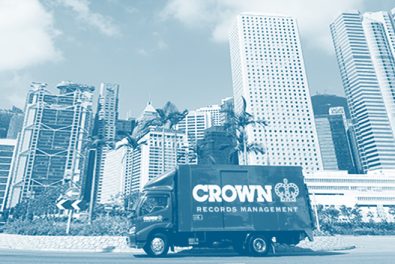Continuing our look at the lifecycle of HR data and how digital solutions can make life simpler.
We have already discussed how having an electronic content management system (ECM) in place has the power to transform HR functions, bringing them together under one umbrella and using automation to simplify processes.
But which functions benefit most and where should you start?
Part One of our series looked at the birth of HR data (during recruitment) and the early days of an employee’s job role.
Now we move on to ‘midlife’ challenges, as employees get their feet under the table…
Employee relations and comms
The business challenge: Sending out business news to all employees can be simple enough, but sending individual messages is time consuming.
Keeping up with house style and branding is also a challenge.
In fact, one of the most difficult aspects is version control. There may be three or four versions of key comms information in the folder, but which is the right one? When was it updated? Are the correct templates being sent out?
The solution: Having ECM in place allows data to be version controlled so everyone knows which is the right file. It can link seamlessly to HRS systems or payroll and the process is much smoother. It can also manage automated email campaigns, saving time.
The business benefits: With the right system in place, employees will only see the correct and updated version of important documents. Any revisions will be managed only by the ECM platform so there is one single version of the truth.
When it comes to training, ECM can provide dashboard information on who has taken each session and how many have passed. It aids compliance and governance and places the onus on employees to complete the tasks without the need for HR intervention.
Annual leave and employee benefits
The business challenge: Keeping track of annual leave is time consuming. Just the process of booking and providing permission can be complicated, even in a small business. For larger operations it is a significant drain on time. Employee benefits bring similar challenges, especially as the benefits may vary depending on job role, length of service and remuneration.
The solution A digital system can manage annual leave and employee benefits. One solution is an employee dashboard which allows employees to see all their information in one place – how much they are paid, what their benefits are (for instance free eye tests, help lines etc), how many days of annual leave they are entitled to and how many are remaining in the calendar year. It gives an employee a holistic view of their employment.
This is another example of how ECM doesn’t have to always solve a problem. Sometimes its role is to pull information from lots of different places and systems – and then bring it together to make life easier for the HR team and for employees.
The business benefits: Providing employees with easy to access and easy-to-understand information helps reduce stress and make life simpler.
The value for HR comes in a reduction in the number of enquiries, phone calls and emails relating to the information that employees can now find easily and quickly by themselves.
They may be able to book their annual leave online, for instance, on a system which tells them which days are available and which are not – saving elongated conversations with HR.
The system makes approval simpler – an email will automatically be sent to the correct manager, with a link to click.
Dashboards for employee benefits can also play a role in increasing awareness and uptake of key benefits.
Want to start digitizing your HR functions? Check out our guide on Simplifying HR.





